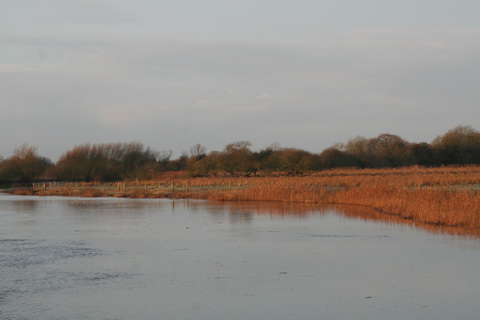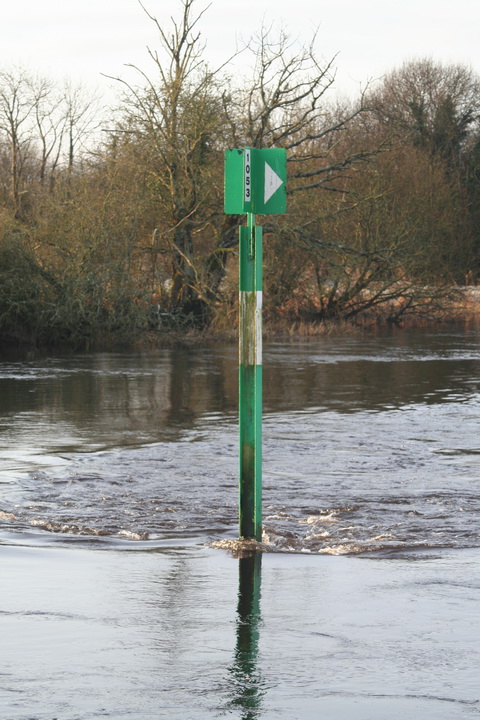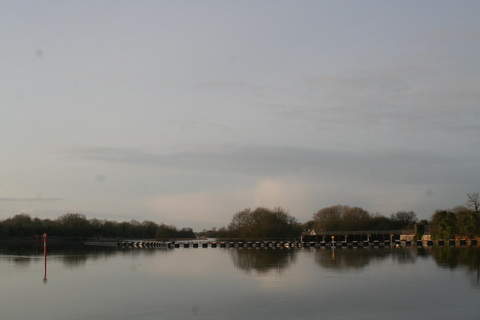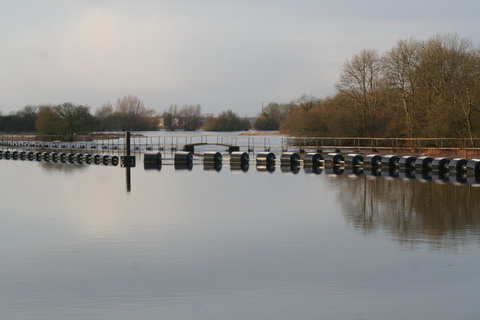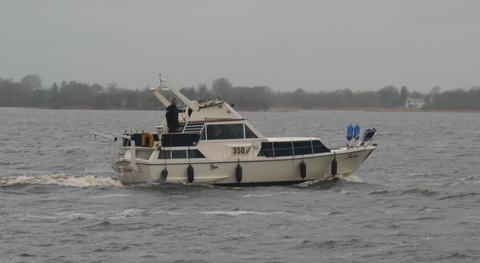The Derry Castle Estate and splendid Demesne, near Limerick, on the Bank of the Shannon, exceeding 4500 Acres, with its vast Lake.
MR GEORGE ROBINS is flattered by having received the instructions of the excellent Proprietor,
Michael Henry Head Esq,
to SELL (without any limit as to protecting price), by PUBLIC AUCTION, at the GRESHAM HOTEL, in SACKVILLE-STREET, DUBLIN, on THURSDAY, the 27th of AUGUST, at Twelve o’Clock, in One Lot,
The magnificent ESTATE, which is Freehold of Inheritance, and designated
THE DERRY CASTLE PROPERTY,
which, for its splendour and renown, stands high amongst the most favoured throughout Ireland. This circumstance is not a little refreshing, inasmuch as the writer is relieved from an attempt to do it adequate justice, and to content himself with a mere outline.
It may be well, first, to observe that, fortunately, the Estate is free from that fearful pest to agricultural improvement and the yeomen’s comfort — the middle men. All are yearly tenants; the tithe is commuted; and it is a fact of no small importance to know that the use of spirituous liquors is unknown throughout this vast district; the necessary consequence is a total absence of
POLITICAL DIFFERENCES, OR DISTURBANCES
of any kind. Having thus cleared the ground of the great difficulty that has but too frequently prevailed in the minds of
THE TIMID ENGLISH CAPITALIST,
it may be well to point out a few of its multifarious advantages.
The Mansion is of importance; it stands on an elevated position above the level of the water, and is entirely suited to a family of high pretensions, with corresponding offices within and without. This edifice and its noble demesne is on the
BANK OF THE FAR-FAMED SHANNON,
the finest river in the empire. In front is a
SPLENDID LAKE, EMBRACING ONE HUNDRED SQUARE MILES OF WATER
20 miles in length, adorned by several delightful islands, whereon are interesting ruins of ancient castles.
The whole comprehends about
FOUR THOUSAND FIVE HUNDRED ACRES
of land, highly cultivated, and in the occupation of a happy and contented tenantry. The best illustration of this circumstance is the fact that the arrear is literally a mere bagatelle.
The mountain scenery, which forms a magnificent amphitheatre, is really of surpassing beauty; the cloud-capp’d mountains rising in majestic grandeur until they seem to approach the clouds — the mighty lakes like oceans of liquid silver — the valleys teeming in fertility — present a scene of such grandeur, beauty and variety, as quite to forbid the hope of conveying a just idea of it by description. The views are extensive and indescribably beautiful, extending over the rich surrounding country, and including
THREE WHOLE PROVINCES OF IRELAND,
and alone terminated by
THE VAST ATLANTIC OCEAN,
“Its mighty waters, ever rolling on
Their myriad countless waves.”
Nature has vouchsafed its kindness to a degree infinitely beyond comparison anywhere, and presents a scene well calculated to elevate and impress the human mind, and incline it better to estimate “THE PERFECT PARADISE BELOW”.
THE FISHERIES AND THE FIELD SPORTS
may safely challenge competition throughout the civilised world. Millions of water fowl congregate on the vast lake. It should be remarked that, independently of
THE IMMENSE ANNUAL REVENUE
from the Lands, there are
EXTENSIVE SLATE QUARRIES
of which the engineers’ report speaks most intelligibly: proving, past doubt, that for quality, extent, and situation, Mr Pennant’s favoured works, now producing
FIFTY THOUSAND POUNDS PER ANNUM
are not at all superior. Copper and Lead Mines are also on this estate, which, if worked, would realise an immense income. Much more might, and perhaps ought to be said, in praise of Derry Castle. Mr Robins, however, prefers to entreat of the intended competitors to seek ocular demonstration. He knows full well that this hasty and imperfect sketch will not impress them with half the delight they are sure to find there.
To those who may still be sceptical it may be added that the vast renown acquired by this
PRINCELY TERRITORY
has rendered it indispensable to indulge the nobility and travellers visiting Ireland by throwing open wide the demesne two days in each week throughout the year.
To conclude — an immense additional income is within reach by those who have money at command, by building
FIFTY OR ONE HUNDRED VILLAS ON THE BANKS OF THE LAKE.
The estate is in the quiet, unpolitical part of Ireland, thirteen miles only from the city of Limerick.
Particulars and Plans, and a drawing of the Castle, are in progress, and may be had 28 days antecedently, at the mansion — of Mr Salmon, at his Offices, 44, Moorgate-street, or Mr David Daly, Solicitor and Receiver, Fitzwilliam-street, Dublin — at Messrs Pyne and Richards’s, George-street, Hanover-square — Gresham Hotel, Dublin — the Auction Mart — and at Mr George Robins’s Offices, London.
PS — The title is clear, concise, and intelligible.
Dublin Evening Mail 7 August 1840
It is possible that Robins was brought in, with his purple pen, after earlier ads failed to attract a buyer. In March 1840 the Limerick Reporter carried an ad that concentrated on the estate’s earning potential.
FEE SIMPLE ESTATES.
To be sold, the
NOBLE DEMESNE AND ESTATES
of
DERRY CASTLE,
With Mansion House, and suitable Square of Offices; Extensive Old Plantation of Valuable
TIMBER
Generally of above 100 years’ growth, situate on that part of the River Shannon
Which forms that Beautiful Expanse of Water, called
LOUGH DERG.
Above 20 Miles long, and 4 broad, on which STEAMERS and TRADING VESSELS ply between Limerick and Shannon Harbour, giving this Estate all the advantages of the
SHANNON AND CANAL NAVIGATION,
And Trade between Limerick and Dublin.
THE HOUSE stands in a most commanding position with respect to this Magnificent LAKE, with most picturesque Mountain Views, and overhung by ranges of nearly 100 Acres of young plantation along the adjoining slopes, planted from 20 to 30 years’ since, by the late Michael Prittie Head, Esq. It is impossible adequately to describe the
BEAUTY OF THE SCENERY
The town and harbour of Killaloe is distant about 3 miles, Nenagh about 9, and Limerick about 12 miles, by land or water.
The Mail Coach Road, from Dublin to Limerick, runs through the detached part of the Estates, called Burgess.
MANURE
Of a most Peculiar and Valuable quality (and the quantity inexhaustible) is obtained from Lough Derg, for the entire Estate, at all seasons.
It is a BLUE SHELLY MARL, which is dredged from the bottom of the Lake into boats by the Tenantry, for which Quays and Harbours are arranged. It has been analysed, and was found to contain 50 per Cent of CARBONATE OF LIME, with other valuable properties set forth in the Analysis.
The more elevated divisions of these Estates abound in
SLATE QUARRIES
So long celebrated as SUPERIOR to any in EUROPE, and are now in full operation, with the splendid outlay of capital by the IMPERIAL SLATE COMPANY, in whose employ several hundred men are permanently engaged to the great advantage of the proprietor of the Estates, who participates in the income under the deeds of contract.
The specimens of COPPER and LEAD MINES afford every reason to believe that, if properly brought into operation, they may become
A RICH SOURCE OF WEALTH.
The MOUNTAIN COMMONAGE comprises about 550 Acres, which has
GREAT CAPABILITIES FOR IMPROVEMENT,
having regard to the MARL raised from the LAKE, being far superior to lime, and an
INCALCULABLE SOURCE OF WEALTH TO THESE ESTATES.
The extensive ranges of
YOUNG PLANTATIONS
Outside the Demesne, along the elevated Divisions of the Estate, are also of GREAT VALUE, comprising large sections of
OAK, LARCH, FIR, &c &c
The thinnings of which would materially tend to the improvement and growth of the Timber.
THE OLD AND YOUNG PLANTATIONS
Are estimated at considerably above £10000.
The Estimated PRODUCTIVE RENTAL VALUE of the Estate, exclusive of the Mansion, Offices, &c may be set down by way of General outline, at £3000 per annum, with the ADDITIONAL INCOME to be derived from the vast outlay of capital by the Imperial Slate Quarry Company, to a proportion of which Mr Head is entitled.
Mr Head had arranged with the principal incumbrancers to the amount of about £30000, to allow their demands to remain outstanding at 5 per cent interest, being disposed to pay off other claims by instalments; but some creditors becoming pressing, he has at length decided upon selling the entire Estate, or a competent part, to pay off the Incumbrances, and a purchaser may, if so disposed, avail himself of
LEAVING ABOUT SAID £30000 OUTSTANDING
to suit his convenience.
Any further particulars will be explained by Michael Henry Head, Esq, Derry Castle, Killaloe.
David Daly, Solicitor, No 26, Fitzwilliam-street, Dublin, is Receiver and Land Agent of the Estates, and has all Rentals, &c and will give every information, furnish statements of title, and receive propositions from purchasers, and under Mr Head’s sanction, will at once conclude a contract for sale.
Te title is perfectly clear, concise, and intelligible, and all seaarches ready for inspection.
The Estates contain 4347 statute Acres, and the young plantations 74800 Trees, exclusive of the old plantations in the Demesne.
February 21
Limerick Reporter 20 March 1840
Neither ad was successful; the estate was not sold until 1844.
The Derry Castle and Burgess estate, county of Tipperary, was knocked down to Francis Spaight, Esq, of Limerick, for £39500 at the Chambers of Master Goold, on Tuesday. The highest bona fide offer for this property at the sale last May was £37500, and it was then bought in at £38000. The estate comprises 3000 acres of land, with mansion house, and offices, on the most picturesque and frequented part of the Upper Shannon, near Killaloe.
Statesman and Dublin Christian Record
16 August 1844








![Turf boat above Killaloe: Admiralty Surveyors' sketch 1839 [by kind permission of the UK National Archives]](https://irishwaterways.files.wordpress.com/2015/01/turf-boat-above-killaloe.jpg?w=500&h=457)









